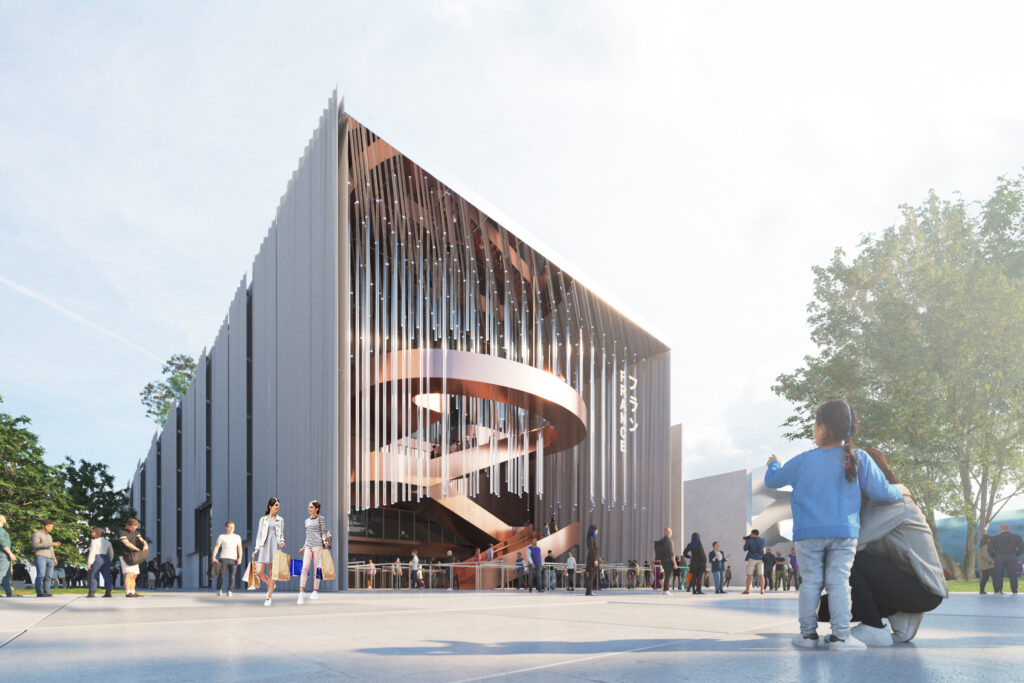
- ARAB NEWS
- 18 Jul 2025

DUBAI: The French architecture firm Coldefy is in full swing to deliver the France Pavilion for the 2025 World Expo in Osaka. In an interview with Arab News En Franҫais, Thomas Coldefy, founder and director of the company, and Zoltan Neville, associate architect, take us through the project, from design to construction, describing the pavilion’s theme and existing challenges.
The French pavilion is an international project that begins with a central site at the heart of Expo 2025.
“In Osaka, France is fortunate to have one of the most important sites of Expo 2025. Since the beginning of the architecture competition, it was expected that we take advantage of the site, which represents the friendship between France and Japan,” Zoltan said.
Located in a central area in Expo 2025, the site aims to represent France’s vision and values.
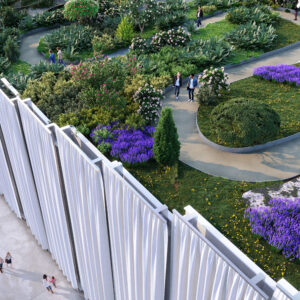
“The pavilion embodies French values of inclusion. An aspect that served as inspiration for the architecture. The building embodies the concept of sharing, inclusivity, hospitality, and exchange,” Coldefy added.
France aims to have one of the most visited pavilions at Expo 2025. The 4000 sqm pavilion, of four floors, expresses an architectural intent for the visitor’s experience to take place both indoors and outdoors, while being accessible to all.
“We approached this project with optimism to show that culture, design, and architecture are essential for social cohesion,” he said.
The project, curated by COFREX, also involves a team of scenographers and designers, hence the collaboration with the Italian design and innovation firm CRA-Carlo Ratti Associati.
“With experience in world expos, the Italian architecture firm allows us to be more relevant and to deliver faster, while also working with teams of Japanese architects,” Coldefy explained.
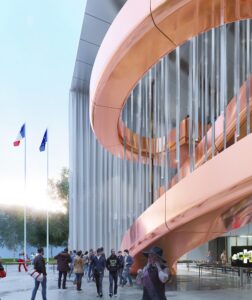
The France Pavilion includes a permanent exhibition and temporary exhibitions. The experience will be staged by GSM Project and produced by Expomobilia, among other partners.
Theme of the France Pavilion
Coldefy’s responsibility is not limited to architecture but involves finding a balance between demonstration and a form of sobriety in line with the current global context. This defines a lightweight architecture that relates design, use, and nature in line with France’s main theme revolving around love.
“Love is an act that unites all cultures. Representing love in the exhibition is to present the coexistence of men, nature, and the artificial world (the pavilions),” he said.
The building’s agility and reusability are among the factors that influence design, construction, and the choice of material.
“France proposes a pavilion with a relatively limited budget for ethics considerations regarding energy consumption and spending on what is considered artificial,” Coldefy added.
The project is in line with the Japanese tradition of respect of the environment, and borrowed landscape, which is at the heart of the country’s culture.
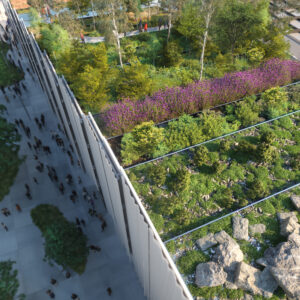
The goal is to reconcile architecture, landscape, French and Japanese culture in a single project, while the global context marked by price volatility, unavailability of materials and equipment, weighs on operating costs and increases challenges related to project delivery.
The relationship between France and Japan
“On the site, we try to represent France and the harmony between the two countries, the know-how and collaborative spirit and encourage people to visit Japan and the France Pavilion,” Zoltan said.
Japan is a strategic partner for France in Asia, and the diplomatic relationship between the two countries go back to more than 165 years. A bilateral roadmap for 2023-2027 defines a Franco-Japanese partnership focusing on the economy, science and technology, culture, and sports, among other priorities.
Japan is a pioneer in architecture and “an inspiring country, technically and in terms of design, a cultural melting pot where modernity and tradition come together,” Coldefy said.
Expansion into the Middle East
Having a significant presence in Asia, the firm aims to expand its activities into the Middle East and Gulf countries, especially in Saudi Arabia.
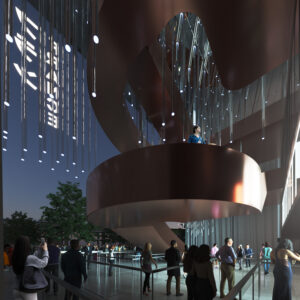
“Actively understanding the different actors is the beginning of our positioning in the region. We hope, with the partnerships we are trying to establish, that it will be the anchoring of a new activity, especially in Saudi Arabia,” Zoltan explained, following his visit to Riyadh organized by Business France.
The Osaka 2025 World Expo, the second after 1970, aims to be a laboratory for expertise and innovation to shape the society of tomorrow around the UN Sustainable Development Goals.
INTERNATIONAL EXPANSION
Established twenty-five years ago in Lille, the French agency has offices in Paris, Hong Kong, and Shanghai, with around fifty employees.
International projects:
International projects enabled the agency to develop more projects in France, such as the Cité Internationale de Paris, “an activity for private clients, such as the Hermès Group, and mixed projects, high-end residential, and retail. As well as cultural infrastructure projects,” Coldefy said.